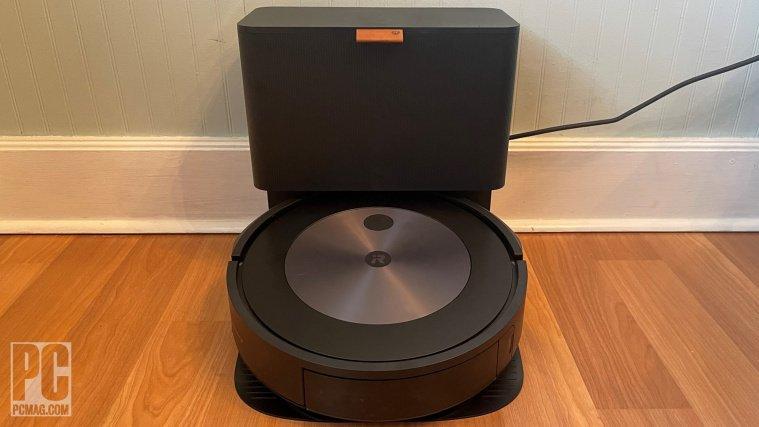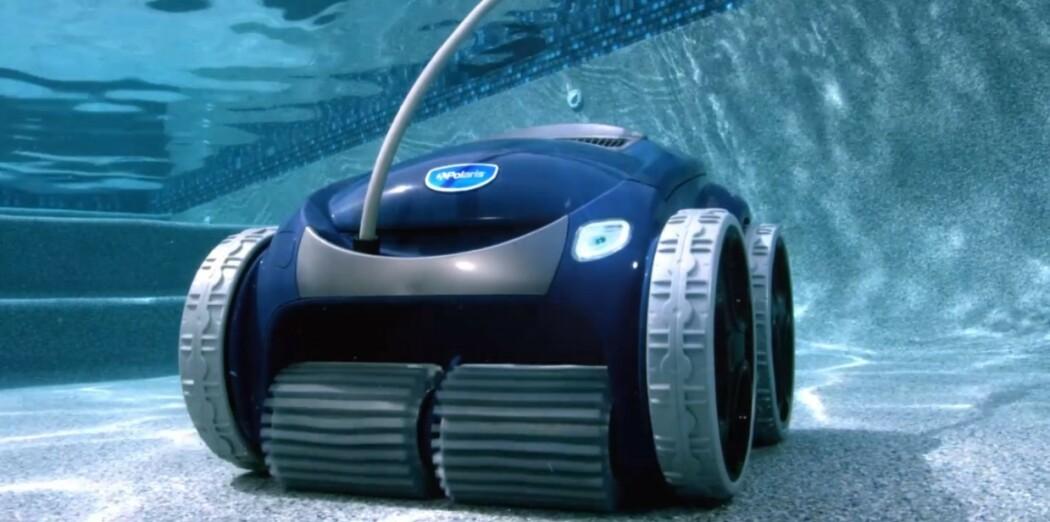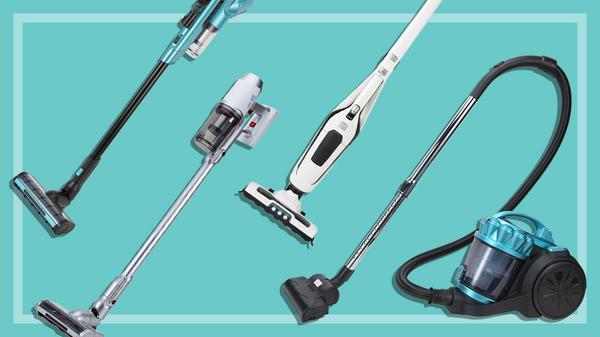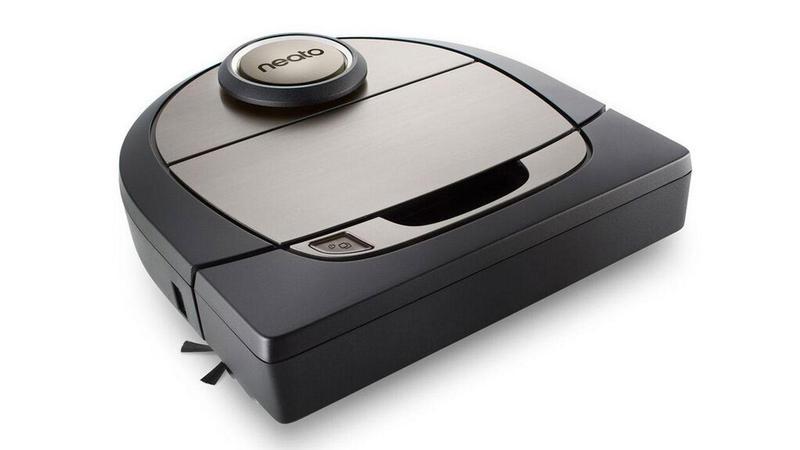iRobot Roomba j7+ review: Is this robot vacuum cleaner worth the money?
VACUUMING is one of the most hated household tasks. It’s noisy, dusty and quite a bit of faff.
So I put the high tech iRobot Roomba j7+ to the test to see whether this robot vacuum cleaner can save my valuable time.
If you click on a link in this story we may earn affiliate revenue.
Pros:
Cons:
What is a Roomba?
A Roomba is a robot vacuum cleaner from the brand iRobot.
It’s not the only robot vacuum cleaner around, but it’s definitely one of the most well known - and the iRobot Roomba j7+ is pretty much top of the range for the brand.
Like other models, it will glide around your home and suck up any dirt and debris as it goes.
But this one comes with a base that doubles as a charging station, and a dirt disposal unit means it’s ready to go any time and you don’t have to worry about emptying out your robot cleaner for months.
Plus, it’s super connected and can be controlled using your phone, Alexa or Google Home.
It’s not cheap though, so I spent a few weeks testing a unit to see whether it’s worth the money.
Roomba review: our experience
Features:
The iRobot Roomba j7+ is all about convenience.
The device automatically maps your home and once it’s learned the layout of everything, you can tell it to vacuum specific places on specific days and at specific times.
There’s a camera on the front of the device and several sensors that help the machine to navigate your home and detect its surroundings.
It can tell, for example, if there’s an obstacle in the way and will automatically avoid this. And it will also get smarter over time as it learns where it can and cannot access.
Cleaning is done with a pair of multi-surface brushes that push any dirt and debris into the machine, where it’s then sucked up. There’s also an edge cleaning brush that helps to sweep in dirt from the sides.
And once it’s finished cleaning up, the Roomba will automatically return to base where it empties out its bin and starts recharging for the next cleaning task.
On top of its cleaning functions, the device is fitted with a high efficiency filter that removes things like dust mites, pollen and pet dander so they don’t get pumped back into the air like stand up vacuum cleaners do.
Set up:
The iRobot Roomba j7+ comes pretty much fully assembled so all you need to do is put the base somewhere with a power point, plenty of space, and away from any stairs.
You’ll need to charge it for about three hours before the first use and then you’ll need to help it map the layout of your home.
There are two settings you can use for the mapping.
You can either send it on a normal vacuuming run, where it will learn the layout of your home while cleaning, or you can send it on a mapping run, which is much faster.
This needs to be done a few times before you can start programming your device, but fortunately you only need to do it at the beginning.
You’ll need to make sure you do a full tidy up ahead of time though, so the Roomba j7+ can fully map your home.
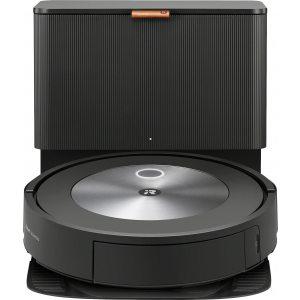
Once the map is complete, you can name different parts of your home, set cleaning and 'keep out' zones and create a cleaning schedule.
Usage:
I found the iRobot Roomba j7+ pretty straightforward to use, though I did make the mistake of not moving everything out of the way and opening all doors for those early mapping runs.
It meant that the device didn’t fully map my home, so I had to restart the mapping process.
But after the mapping was complete, I was able to set the Roomba j7+ on a regular schedule to do the cleaning for me while I did something else, which of course I loved.
I also didn’t need to tidy up each time as the machine automatically detects obstacles and avoids them. You can then use the app to teach it to avoid those areas altogether or send it back to clean again after you’ve tidied up.
You can also create smaller cleaning areas within a room on the map, such as the bit in front of the sofa, and send your Roomba j7+ to do an extra clean just there.
Over a few weeks, I did spot some flaws, though.
The size and shape of the Roomba j7+ means it can’t squeeze into any tight spots, and it’s also not as efficient as our regular vacuum cleaner at sucking up spills, like coffee grounds.
So while the Roomba j7+ is very good at doing a daily clean, you’ll need another device for a deep clean.
As it basically crawls along the floor, it’s not great with rugs either. Unless they’re heavy enough to stay put, you may find your rug gets pushed around or bunched up so it’s best to lift these out of the way.
The Roomba j7+ also likes to bump into things a lot. This is pretty normal early on as it learns the layout of your home but I found that in some cases I needed to have the light on to help improve navigation and reduce those bumps.
Because of that, I wouldn’t recommend leaving your Roomba completely unattended - I had to pick up stuff that got knocked off the edge of the table, for example.
For any major issue though, the Roomba j7+ will stop automatically and let you know there’s a problem.
Roomba review: the verdict
Robot vacuum cleaners are generally much more expensive than regular vacuum cleaners, and the Roomba j7+ is no exception. And there are quite a few extra expenses.
The filter on the Roomba j7+ needs to be replaced every two months, for example, and the wheels need to be replaced every 12 months.
The Roomba j7+ also comes with a lot more maintenance requirements.
To keep it in top condition, iRobot recommends cleaning the filter once a week and wiping down the front wheels every two weeks. For the sensors and brushes, it’s once a month. I definitely don’t look after our normal vacuum cleaner this well!
But after a few weeks of using the Roomba j7+, you’ll be wondering what you ever did without it.
It saves so much time and effort during the week and I think the bigger your home, the more time you'll save.
For busy families that are struggling to keep up with regular cleaning, this is definitely a handy gadget to have around.
If your home is fairly small or there are lots of tight spaces then you might be better off with a regular vacuum cleaner.
How to clean a Roomba j7 filter
Cleaning the filter is actually pretty straightforward.
All you need to do is press the bin release button to take out the bin, then pull out the filter. There are spaces on the filter that you can grip onto to make this easier.
Then you just tap the filter against the side of your bin until any debris has fallen out.
Once it’s clean, just push the filter back into the bin and refit the bin onto the Roomba.
You’ll need to replace the filter every two months.
Will Roomba fall down stairs?
Roombas are fitted with sensors that guide it around your home.
On the bottom, there are “cliff sensors” that can detect stairs and stop the robot before it goes over the edge.
However, you should place the base away from any stairs to give the Roomba space to move around.
How many years does a Roomba last?
iRobot hasn’t released any information on the lifespan of Roombas although they do come with a limited warranty of two years.
In general, robot vacuum cleaners can last up to six years, and possibly longer with good maintenance.
Obviously you’ll need to replace things like brushes and filters long before that happens.
Most read in Sun Selects
Fab Phones snap up a good phone HOT AIR TREK-TACULARNow that you’ve read our review of the iRobot Roomba j7+, check out our round up of other robot vacuum cleaners.
We’ve also rounded up some cordless vacuum cleaners that would be great for sucking up the spills.
For car owners, we’ve got a guide to handheld vacuum cleaners as well.
